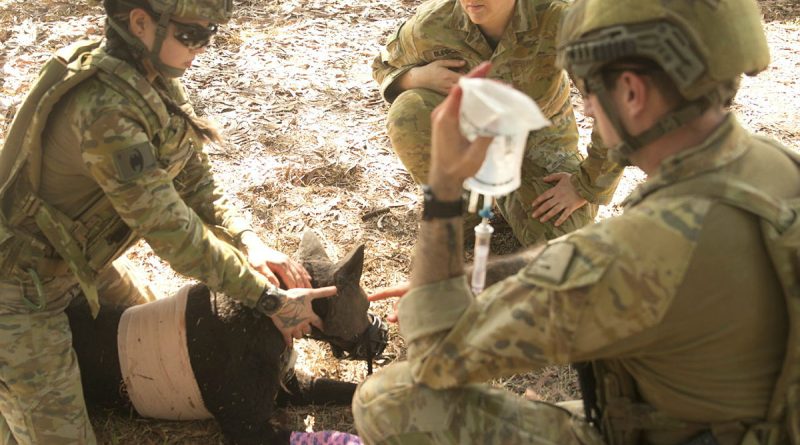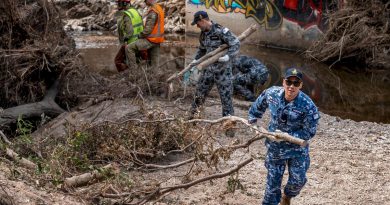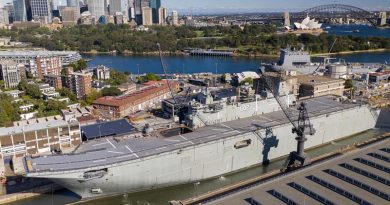Critical care training for soldiers’ best friends
Share the post "Critical care training for soldiers’ best friends"

Explosive detection dog handlers from the 1st Combat Engineer Regiment and medics from the 1st Health Battalion conducted a training exercise in Darwin recently to enhance the care of canine combat casualties.
CAPTION: Army sappers from the 1st Combat Engineer Regiment and medics from the 1st Health Battalion practise critical first aid skills on the robotic training dog, Diesel during Canine Tactical Combat Casualty Care training. Story by Captain Annie Richardson. Photo by Signaller Kobi Rankin.
The key contributor to the training initiative was Captain Alexandra Blecich, the Army’s only full-time veterinarian, based at the School of Military Engineering in Sydney.
Captain Blecich said preparing handlers and medics to provide swift and effective medical intervention for combat-related injuries was crucial to saving dogs’ lives in the field.
“By incorporating realistic simulations with injuries such as gunshot wounds, compound fractures and amputations, we ensure our personnel are well prepared to handle any situation that they may face,” Major Blecich said.
Led by Corporal Luke Saxton, the explosive detection dog supervisor, the training reinforced the criticality of caring for the dogs.
“Our dogs play an indispensable role in safeguarding our forces,” Corporal Saxton said.
“It is our responsibility to provide them with the best possible care, and realistic training scenarios that enable us to handle any medical emergencies we may encounter in the field reinforce that.”
At the heart of the exercise was the advanced canine medical simulator Diesel, which allowed personnel to practise a wide range of medical interventions on a lifelike model.
The simulator accurately replicates the anatomy and physiology of a canine, including active breathing, audio cues and pulse.
By exposing handlers and medics to realistic scenarios, such as administering first aid to a dog suffering from a gunshot wound or managing a compound fracture, the training significantly enhanced their ability to provide critical care in high-stress environments.
Handlers and medics applied tourniquets, controlled bleeding and stabilised fractures, among other essential medical interventions.
Corporal Saxton said the integration of advanced medical simulators like Diesel into the training regimen improved the ability to prepare for real-world situations.
“By practising with highly realistic injuries and employing the latest medical techniques, we are better equipped to support our dogs and mitigate their injuries when it matters most.”

CAPTION: The Canine Tactical Combat Casualty Care training ensures explosive detection dogs, like 1st Combat Engineer Regiment’s Sylvie, get the treatment they need on operation. Photo by Signaller Kobi Rankin.
.
.

.
.
Share the post "Critical care training for soldiers’ best friends"





